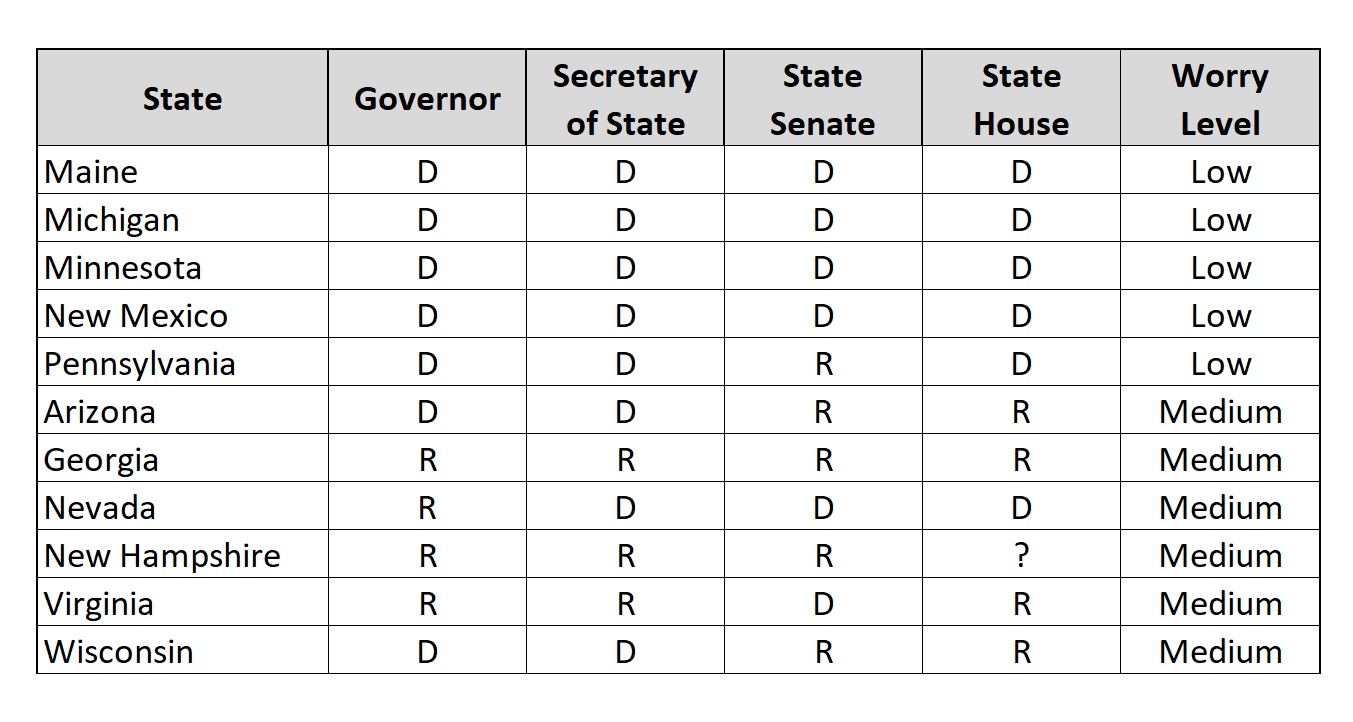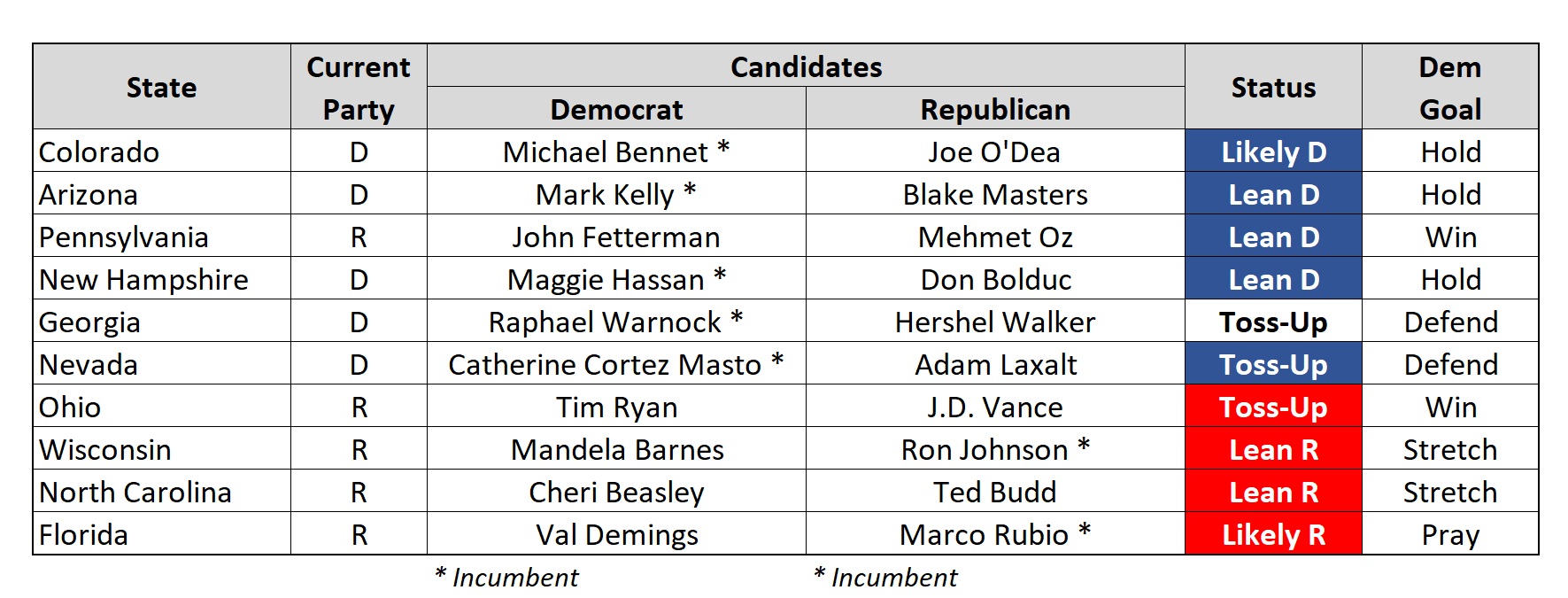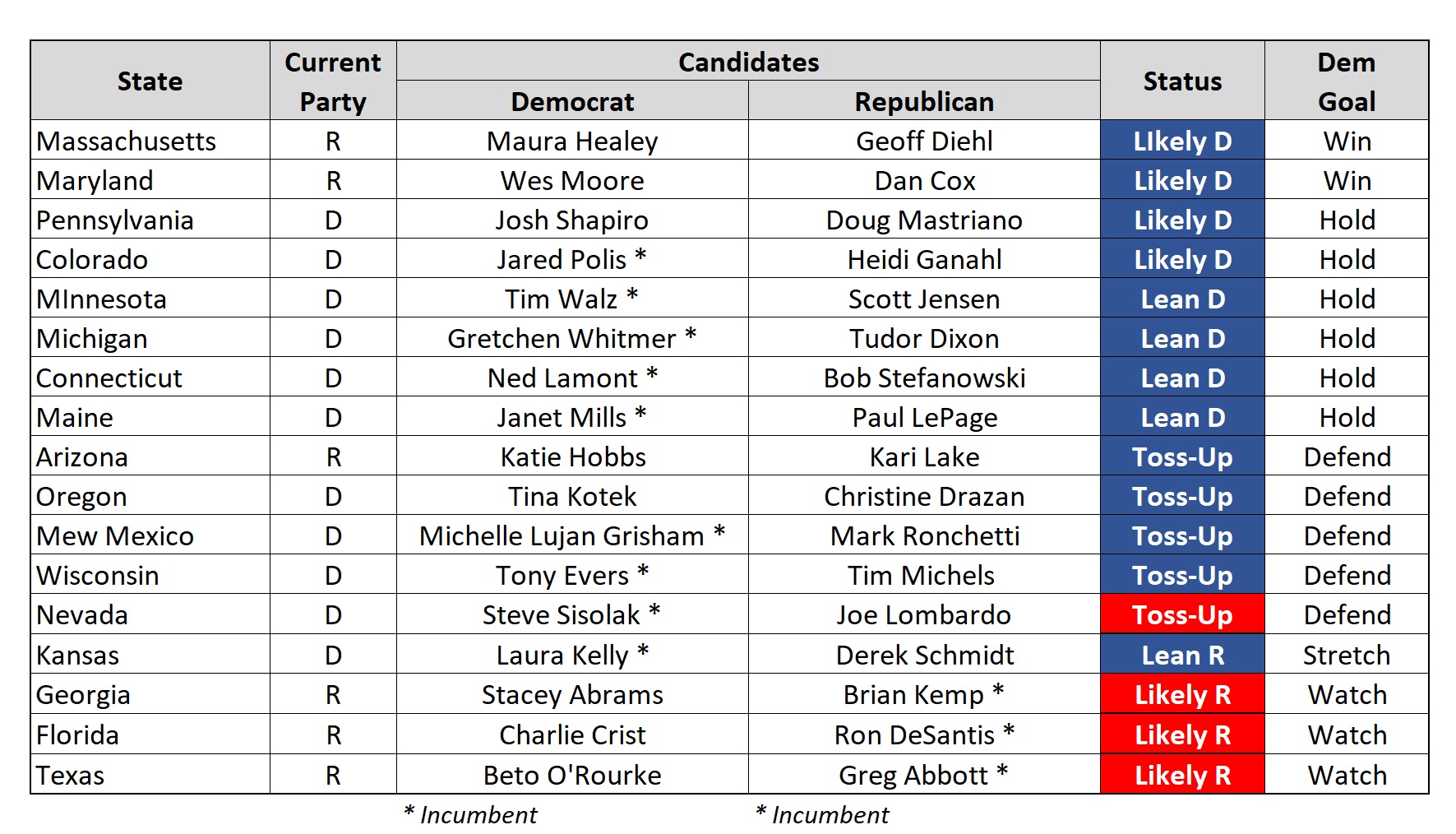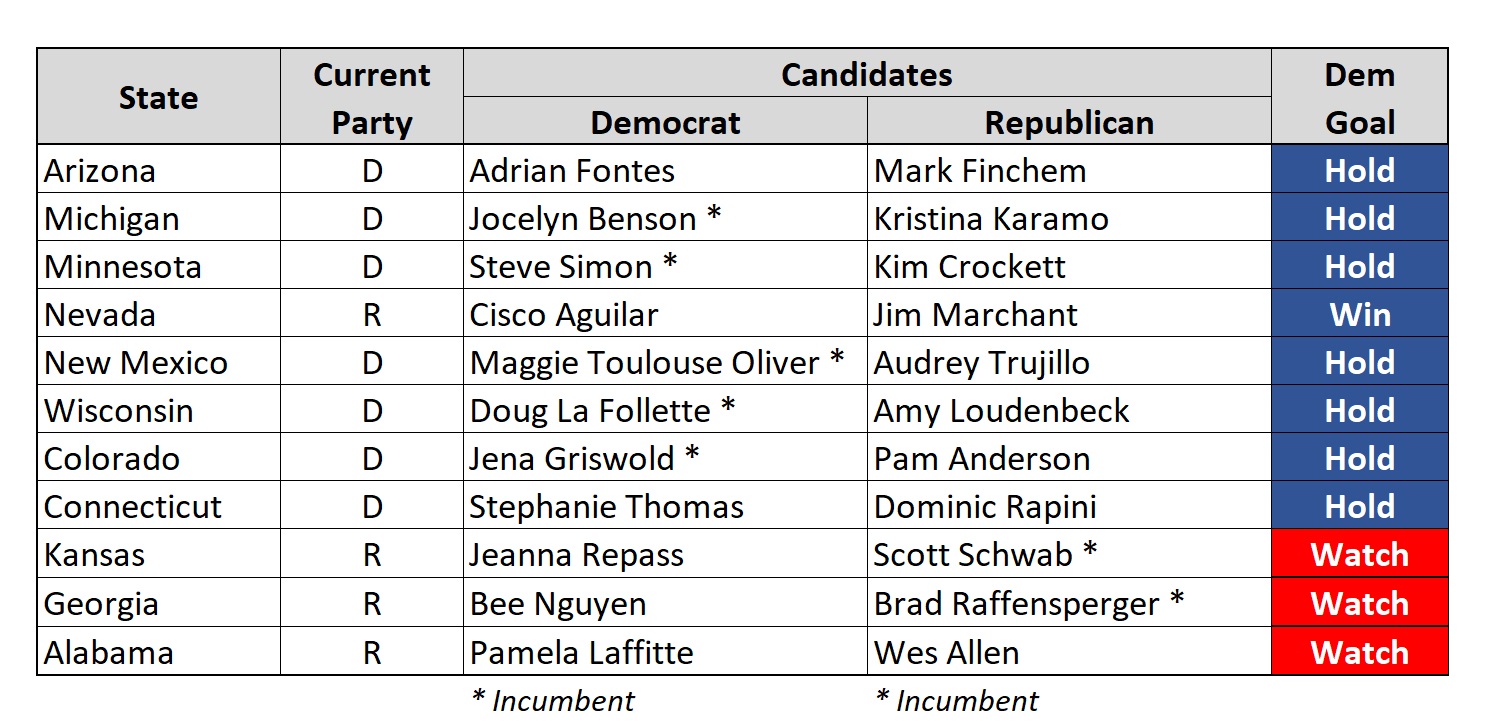The 2022 elections aren’t quite finalized yet, but I thought I’d go ahead and post a quick post-mortem – summarizing the winners & losers in addition to evaluating my own projections as reflected in my Final 2022 Election Analysis post.
U.S. House
My projection: “While I don’t see as massive of a ‘red wave’ as others, the GOP will end up with a solid majority in this chamber.”
There certainly was not a red wave. The GOP will likely end up about four seats north of the 218 necessary to own the chamber. While that’s a pretty thin margin, 218 was all they needed to fully control the agenda and the committees. Kevin McCarthy will have a tough time managing the various factions of his party – assuming he even gets the final nod as Speaker. The coming dysfunction will be fascinating… in a train wreck sort of way.
I’m hopeful that the imminent flood of revenge-driven investigations and impeachment votes will go largely unreported in the media and that everyone will eventually at least try to provide reasonable oversight and address some real problems.
I’m also shadowing a leprechaun that I spotted yesterday and I’m hopeful that he’ll lead me to his pot of gold at the end of the rainbow.
U.S. Senate
My contrarian data-intensive projection: “I still think Democrats have a very slight advantage here.”
My model was quite accurate here, with all of my Likely R/D and Lean R/D projections being correct. Of my three Toss-Ups, there’s been one D win, one R win, and one that’s still a Toss-Up. Here’s a color-coded version of my projection table:
Democrats will retain control of the Senate with either a 50 or 51 seat majority – hopefully the latter, with Warnock winning the Georgia Senate runoff.
State Legislatures
My admittedly data-free projection: “my rough guess at the moment is that this cycle will see no major flips in the control of state legislatures for either party.”
I was a bit off here, but not by a lot. The number of flips were minimal, but the overall Democratic performance was still impressive.
Over the past 120 years, an average of 12 state chambers have flipped party control after each election cycle. This year, only four chambers flipped… and all flipped from red to blue. Democrats lost no legislative chamber that they previously controlled – a feat that the president’s party hasn’t accomplished in a mid-term election since 1934.
Democrats made some significant gains:
- Michigan: Democrats won control of both chambers. (Republicans previously controlled both chambers).
- Pennsylvania: Democrats won control of the State House. (Republicans previously controlled both chambers).
- Minnesota: Democrats won control of both chambers. (Republicans previously controlled the State House).
- Vermont: Democrats won a super-majority in both chambers, allowing them to override the Republican Governor’s veto. (Democrats previously held only a House super-majority.)
On the other hand, Republicans tightened their grip on a few state chambers that they already controlled:
- Florida: Republicans won super-majorities in both chambers.
- Iowa: Republicans won a super-majority in the State Senate.
- South Carolina: Republicans won a super-majority in the State House.
- North Carolina: Republicans won a super-majority in the State Senate. (However, Republicans failed to win a super-majority in the State House which would have allowed the GOP to override the Democratic Governor’s veto.)
- Wisconsin: Republicans won a super-majority in the State Senate. (However, Republicans failed to win a super-majority in the State House which would have allowed the GOP to override the Democratic Governor’s veto.)
There are also a couple of outstanding state legislative results:
- New Hampshire: Republicans are likely to retain control of both state legislative chambers. However, there are 28 (!) ongoing recounts after which the State House could conceivably flip to Democratic control.
- Alaska: Control of the State House is still in question as votes are still being counted. Republicans & Democrats currently share control of the chamber.
Governors
My contrarian data-intensive projection: “definitely a mixed bag but not necessarily the absolute disaster we’re being led to believe.”
My model was fairly accurate here, with a slight over-performance by Democrats. All of my Likely R/D & Lean D projections were correct, but one of my Lean R projections was won by the Democrat. Of my five Toss-Ups, there were four D wins and one R win. Here’s a color-coded version of my projection table:
As for the interesting state trifectas (Governor + State Senate + State House): The Democratic wins in Maryland and Massachusetts gave both states Democratic trifectas. The Democratic wins in Michigan and Minnesota (plus the state legislative flips) gave both states a Democratic trifecta. Democrats also kept their existing trifectas in Maine, New Mexico, and Colorado.
The Democratic win in Arizona broke the existing GOP trifecta. The Republican win in Nevada broke the existing Democratic trifecta.
Secretaries of State
Given the lack of publicly available data in these races, I didn’t even attempt SoS projections and simply noted the important races that I was following. Here’s a color-coded version of that table:
The very good news is that most of the 2020 election-denying idiots lost their SoS races.
Bottom Lines
Democrats did significantly better than most pundits predicted. Democrats even slightly out-performed my own projections.
The primary Democratic loss was control of the U.S. House. Democrats did better than expected. But they still lost. However, without partisan gerrymanders, Democrats could well have held the chamber. While both parties are guilty of gerrymandering, Republicans are much better at it. The GOP gained numerous seats in Florida, Texas, Georgia, and Ohio by aggressively redrawing district maps in their favor, which were then backed by sympathetic state courts. Democrats gained a few seats in New Mexico, Oregon, and Maryland but, to their naive credit, had passed anti-gerrymandering reform measures in many large Democratic states such as California, New Jersey, Washington, Colorado, and Virginia. Democrats did try to gerrymander New York, but that map was struck down by a state judge as too partisan and replaced with one that favored Republicans. Well done, guys.
Pre-election, I was profoundly worried about state-level GOP officials or GOP-controlled legislatures having both the power and desire to curtail voting rights and/or overturn the results of the 2024 general election in their respective states. While it’s tough at this point to declare which states might be in-play in 2024, here’s a list of possibilities along with a party control summary for the state-level election power centers. I’m also including my own current level of concern, based on the players and their histories:
 In short, while I remain cautious about election integrity in some states, there are no in-play states that currently rise to a “High” level of concern in my book. And that’s great news for democracy.
In short, while I remain cautious about election integrity in some states, there are no in-play states that currently rise to a “High” level of concern in my book. And that’s great news for democracy.


